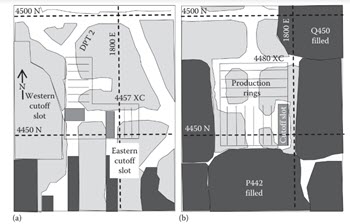Internet data traffic is anticipated to increment exponentially in the next decade lead by a distributing growth of MU parallel to their bandwidth consumption in mobile applications. It has been proved that on-demand MUs live video caused attention to the advancement of Tele-traffic over mobile networks.

In addition, a number of repetitious exploit of pop videos from the MUs, e.g. online blockbusters, and leads to extra video transmissions. The extra data transmissions can be cut down using caching technologies into intermediate network storage nodes. The caching technology contributes video capacity nearer to the MUs which helps extra data transmissions through redirecting the transferring requests to the intermediate storage nodes. In general, wireless data caching comprises of two phases: Data positioning and Data deliverance. Firstly, Data positioning phase, big videos are cached into storage nodes on off-peak turns, as in Data deliverance phase, videos called for are delivered from local caching system to MUs. Previous researches moved on the caching solutions of the
Device-to-Device (D2D) and Wireless Sensor networks (WSN). In particular ,a caching scheme was introduced for a D2D based mobile network operating on the MUs’ caching of big video capacity. Consequently, in D2D
cluster size was optimized for cutting down video downloading delay using caching scheme. In , a novel caching schemes for WSN, the protocol model of was introduced. Because small-cell embedded architectures will rule in future heterogeneous networks (HetNet), small-cell caching establishes a promising result for Het Nets. In, the small-cell caching is investigated in the context of stochastic networks. The average performance is developed via stochastic geometry, where the distribution of network nodes are modeled by Poisson point process (PPP). In this paper, we suggest a marketed small-cell caching scheme comprising an network service provider (NSP), video retailers (VRs) and mobile users (MUs). We optimize such a scheme inside the Stackelberg game framework by considering the SBSs as a particular type of resources for the role of video caching. Furthermore, Stackelberg game is a game that comprises a leader and a number of viewers competing with one another with respect to certain resources as indicated in . The leader comes in at first and the viewers follows. However, in our scheme, we look at the NSP as the leader and the VRs as the viewers.
The NSP fixes the cost of renting an SBS, whereas the VRs deal one another for renting SBSs partition. Consequently, this paper implements the first optimization caching system based on game theory. In detail, our tasks are; 1) modeling the MUs and SBSs in the network differently as links to PPP . Based on this network model, we demonstrate an efficient MU video downloading process based on stochastic geometry theory probability over accessed videos directly from the SBS storage; 2) developing a productive caching model with the NSP and VRs benefits from SBSs renting. 3) Suggesting maximized average profit from NSP and the VRs through Stackelberg game framework. With theoretic framework, we look into different pricing strategies whereby the price charged to unlike VRs changes. 4) Through solving a non-convex optimization problem, we checked into the Stackelberg balance of this scheme and the optimal solution is linked to each SBS storage size and the quality dispersion of the VRs. 5) same pricing scheme were considered. Although same pricing scheme is substandard to the different NSP’s benefit, we found that same pricing is capable of reducing more backhaul costs.
The rest of this paper is organized as follows. We describe the system model in Section II and establish the related profit model in Section III. We then formulate Stackelberg game for our small-cell caching system in Section IV. In Section V, we investigate Stackelberg equilibrium for the no uniform pricing scheme by solving a non-convex optimization problem, while in Section VI, we further consider the uniform pricing scheme. Our simulations and numerical results are detailed in Section VII, while our conclusions are provided in Section VIII.



0 Comments